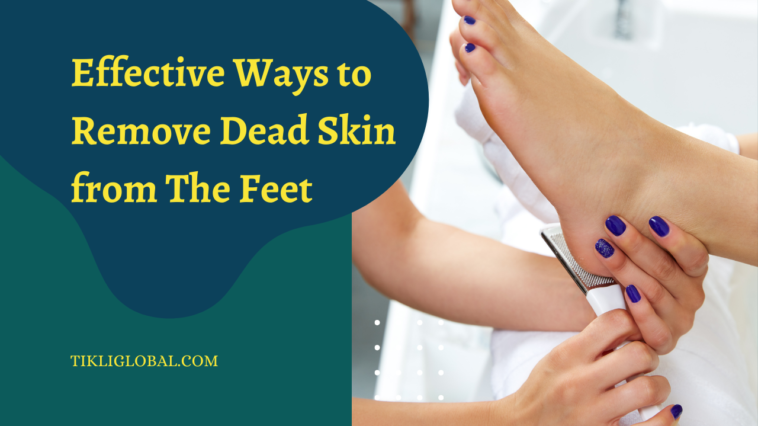Dead skin on the feet is a common problem that can cause discomfort and unsightly appearance. Dead skin cells accumulate on the feet due to a variety of reasons, including dry skin, friction from shoes, and environmental factors such as hot and dry weather. The accumulation of dead skin can lead to rough, dry, and cracked feet, which can be painful and unsightly.
Types of Hard Skin That Can Develop Under Feet
There are several types of hard skin that can develop under the feet, including:
- Calluses: Calluses are thick, rough patches of skin that form as a result of repeated friction or pressure. They are most commonly found on the balls of the feet and the heels.
- Corns: Corns are smaller and more painful than calluses and typically develop on the toes. They are caused by ill-fitting shoes that put pressure on the toes.
- Plantar Warts: Plantar warts are growths that develop on the soles of the feet and are caused by a viral infection. They are often painful and can be mistaken for calluses.
- Fissures: Fissures are deep cracks in the skin that can occur on the heels and can be painful. They are often caused by dry skin and can be exacerbated by walking barefoot on hard surfaces.
- Blisters: Blisters are fluid-filled pockets that form on the skin as a result of friction or pressure. They can occur anywhere on the feet but are most common on the soles and toes.
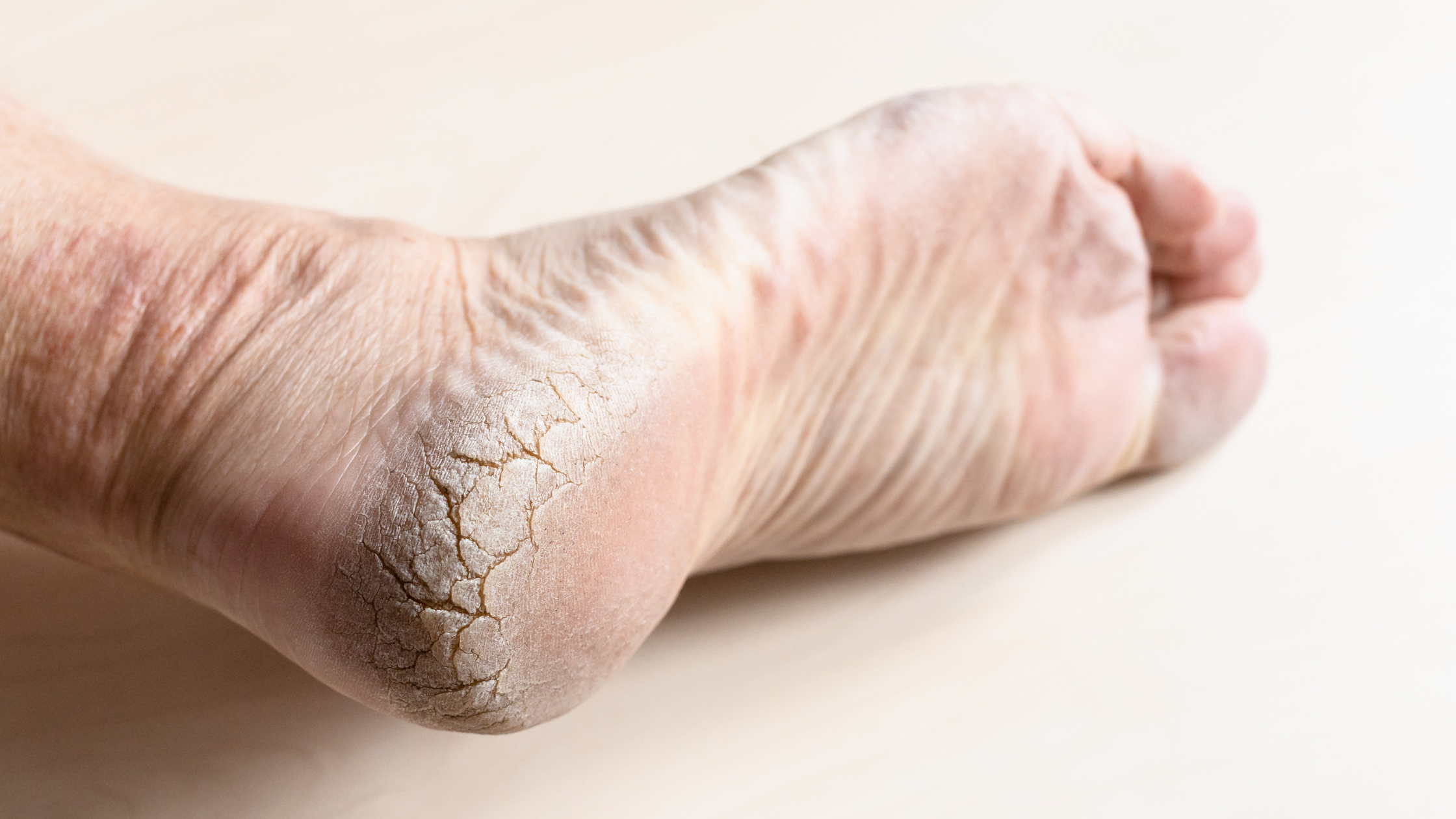
It’s important to identify the type of hard skin you have and treat it appropriately to prevent pain and discomfort. If you are unsure about the type of hard skin you have, it’s best to see a doctor or podiatrist for a diagnosis.
Symptoms And Signs of Corns and Calluses
Corns and calluses are common conditions that can cause thick, hard skin to develop on the feet. The following are common symptoms and signs of corns and calluses:
- Thick, rough patches of skin: Corns and calluses are characterized by thick, rough patches of skin that develop on areas of the feet that are subjected to friction or pressure.
- Pain: Corns and calluses can be painful when pressure is applied to them, such as when wearing tight shoes or walking.
- Hard, raised bumps: Corns and calluses often have a hard, raised appearance and can be felt when touched.
- Discoloration: The skin on corns and calluses may be discoloured and may appear yellow or white.
- Location: Corns are typically found on the toes, while calluses are more commonly found on the soles of the feet and the heels.
Causes Dry, Cracked Feet and Heels
Dry, cracked feet and heels can be caused by several factors, including:
- Lack of moisture: Dry skin can lead to cracking, especially on the feet and heels which are often subjected to friction from shoes and the ground.
- Weather: Cold, dry weather can strip the skin of its natural oils, leading to dryness and cracking.
- Age: As we age, the skin naturally becomes drier and less elastic, making it more prone to cracking.
- Medical conditions: Certain medical conditions, such as diabetes, can cause dry skin and increase the risk of cracking.
- Hot showers and baths: Hot water can strip the skin of its natural oils, leading to dryness and cracking.
- Wearing open-toe shoes: Wearing open-toe shoes can expose the feet to the elements and increase the risk of dryness and cracking.
- Using harsh soaps: Harsh soaps can strip the skin of its natural oils, leading to dryness and cracking.
To prevent dry, cracked feet and heels, it’s important to keep the skin moisturized by using lotion or foot cream, avoiding hot showers and baths, and wearing closed toe shoes.
Ways to Remove Dead Skin from The Feet
There are several effective ways to remove dead skin from the feet and keep them soft and smooth. The following are some of the most effective methods for removing dead skin from the feet:
1. Soaking:
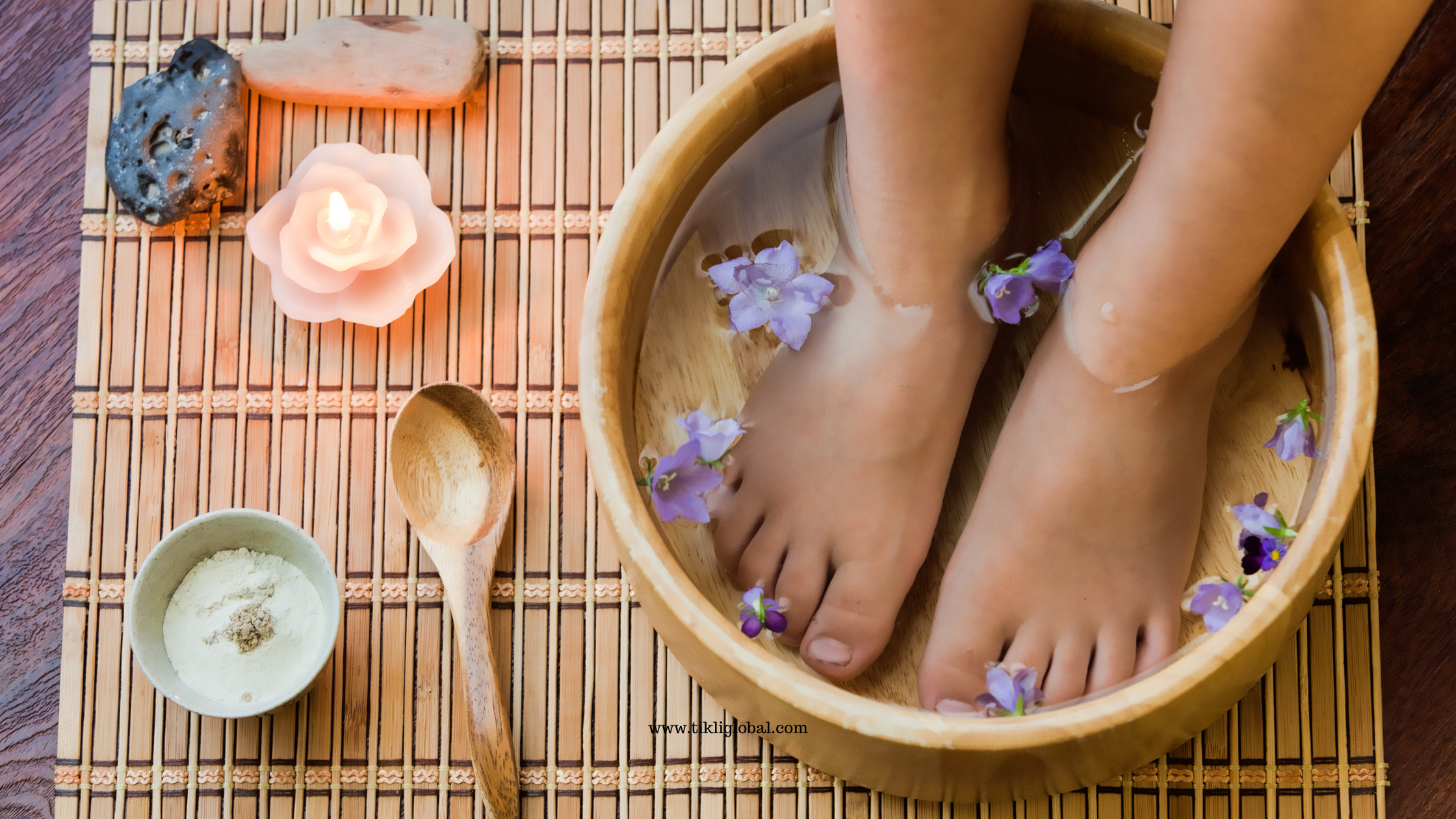
Here’s how to soak your feet to remove dead skin:
- Fill a basin or tub with warm water: Fill a basin or tub with warm water, making sure it’s large enough to comfortably soak your feet. The water should be warm, but not hot.
- Add Epsom salt or baking soda: To help soften the dead skin, add 1/2 cup of Epsom salt or baking soda to the water.
- Soak your feet: Soak your feet in the water for 15-20 minutes. The warm water will help soften the dead skin, making it easier to remove.
- Gently scrub the dead skin: After soaking, use a pumice stone or foot file to gently scrub the dead skin away. Start with the heels and work your way to the toes. Be gentle and avoid using too much pressure, as this can cause the skin to become irritated.
- Rinse your feet: After scrubbing, rinse your feet with warm water to remove any remaining dead skin and Epsom salt or baking soda.
- Dry your feet: Gently pat your feet dry with a clean towel. Avoid using a hair dryer, as the heat can dry out the skin.
- Moisturize your feet: After soaking and drying your feet, apply a moisturizing foot cream or lotion to keep the skin hydrated and soft.
Repeat this process once a week or as needed to keep your feet soft and smooth.
2. Exfoliating:
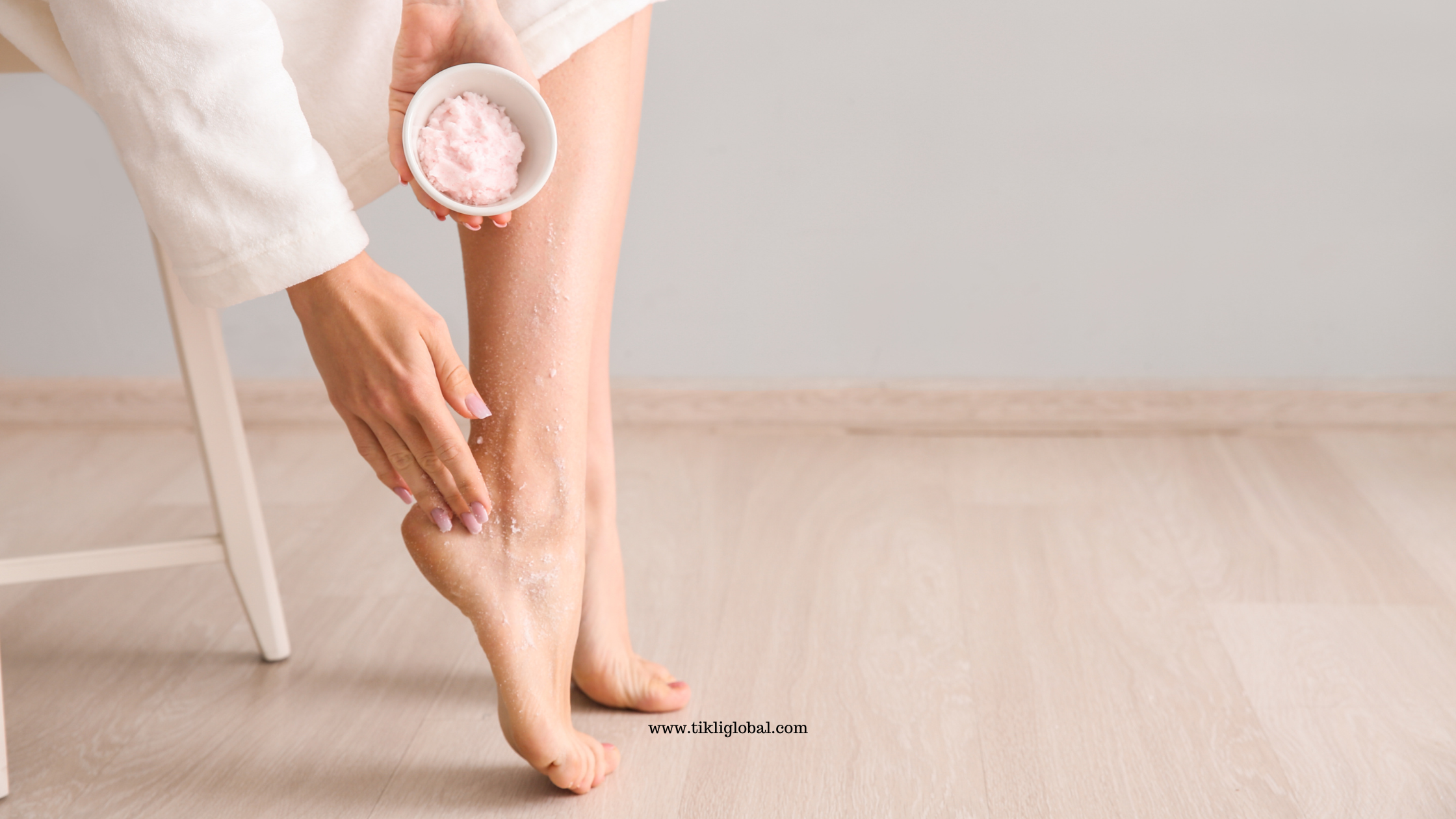
Exfoliating is a process of removing dead skin cells from the surface of the skin. This helps to reveal smoother, brighter, and healthier-looking skin. Exfoliating can be done on various parts of the body, including the face, body, and feet.
There are several methods of exfoliating, including using physical exfoliants such as scrubs, brushes, and sponges, or chemical exfoliants such as alpha-hydroxy acids (AHAs) and beta-hydroxy acids (BHAs).
It’s important to exfoliate regularly, but not too often, as over-exfoliating can damage the skin and cause irritation. It’s also important to choose the right type of exfoliant for your skin type, and to follow the instructions carefully.
If you have sensitive skin, it’s best to avoid physical exfoliants and opt for a gentle chemical exfoliant instead.
Here’s how to exfoliate your feet to remove dead skin:
- Prepare a scrub: Mix together equal parts of sugar and oil (such as olive oil or coconut oil) to create a scrub. You can also add a few drops of essential oils for added benefits.
- Wet your feet: Wet your feet in warm water for a few minutes to soften the dead skin.
- Apply the scrub: Massage the scrub into your feet, focusing on the areas with the deadest skin. Pay extra attention to the heels and balls of your feet.
- Rinse your feet: Rinse your feet with warm water to remove the scrub.
- Dry your feet: Gently pat your feet dry with a clean towel.
- Moisturize your feet: After exfoliating and drying your feet, apply a moisturizing foot cream or lotion to keep the skin hydrated and soft.
3. Moisturizing:
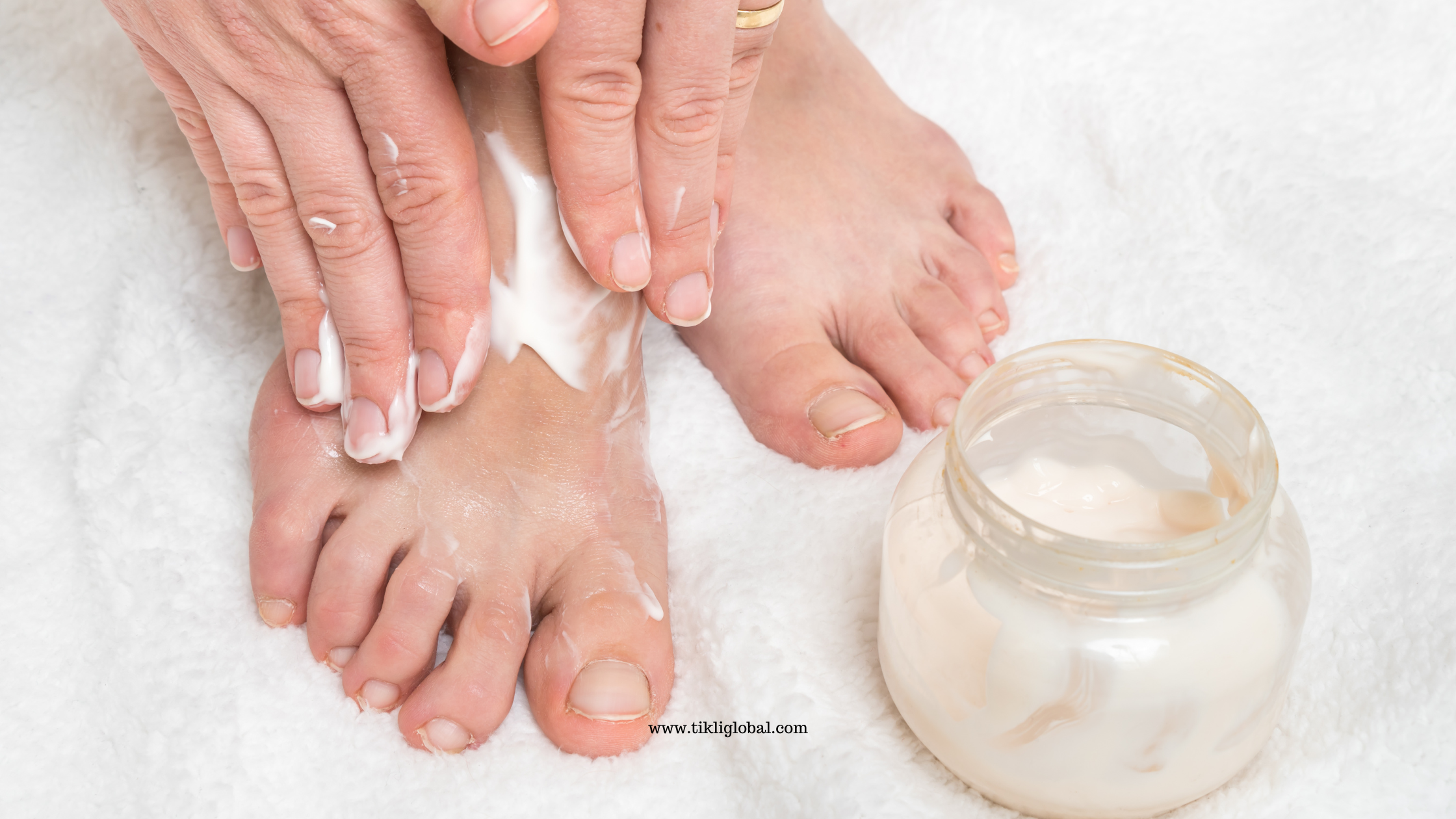
Taking care of your feet by moisturizing regularly can help to improve overall foot health. This can reduce the risk of foot problems, such as fungal infections, and keep your feet looking and feeling great.
Here’s how to moisturize your feet to remove dead skin:
- Clean your feet: Wash your feet with warm water and soap to remove any dirt and oil. Dry your feet thoroughly.
- Apply a foot cream or lotion: Choose a moisturizing foot cream or lotion that is designed for dry, rough skin. Apply a generous amount to your feet, focusing on the areas with the most dead skin.
- Massage the cream in: Massage the cream into your feet, making sure to cover all areas, including the heels, balls of your feet, and toes.
- Put on socks: Put on a pair of clean socks to help lock in the moisture and protect your feet from the elements.
4. Wearing proper footwear:
Wearing shoes that fit properly and are made of breathable materials can help prevent friction and reduce the risk of dead skin build-up.
5. Avoiding hot showers and baths:
Hot water can strip the skin of its natural oils, leading to dryness and cracking. Avoid hot showers and baths and opt for lukewarm water instead.
6. Using a humidifier:
Using a humidifier in your home can help keep the air moist and prevent dry skin, especially during the dry winter months.


